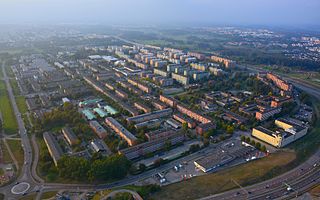
Rinkeby is a district in the Rinkeby-Kista borough, Stockholm, Sweden. Rinkeby had 19,349 inhabitants in 2016. The neighbourhood was part of the Million Programme.

Rosengård was a city district in the center of Malmö Municipality, Sweden. On 1 July 2013, it was merged with Husie, forming Öster. In 2012, Rosengård had a population of 23,563 of the municipality's 307,758. Its area was 332 hectares.

The 2005 French riots, was a three-week period of riots in the suburbs of Paris and other French cities, in October and November 2005. These riots involved youth in violent attacks, and the burning of cars and public buildings.
Stig Svante Eugén Bergling, later Stig Svante Eugén Sandberg and Stig Svante Eugén Sydholt, was a Swedish Security Service officer who spied for the Soviet Union. The Stig Bergling-affair, one of Sweden's greatest spy scandals, began when he was arrested in Israel in 1979 by Israeli counterintelligence and in the same year in Sweden was sentenced to life imprisonment for aggravated espionage. He fled to Moscow, however, during a conjugal visit in 1987 he managed to escape with the assistance of his then wife Elisabeth Sjögren. Bergling's escape was a major embarrassment for Sweden's liberal prison system and prompted the resignation of the justice minister.
Between 23 and 29 September 2006, youths of mainly immigrant descent rioted in Brussels, causing the destruction of several shop windows and the burning of ten cars and part of a hospital. The immediate cause of the riots was anger at the unexplained death in custody of a local man of Moroccan origin, Fayçal Chaaban.

Wood End is an area in the north of the city of Coventry, England. Wood End is surrounded by the districts of Bell Green, Alderman's Green, Potters Green and Henley Green.
Riots in the Val-d'Oise department in France began on 26 November 2007, following the deaths of two teenagers, whose motorcycle collided with a police vehicle. The circumstances recalled those that precipitated the 2005 unrest, which began in Clichy-sous-Bois when two teenagers lost their lives as they evaded arrest while hiding in an electrical substation.
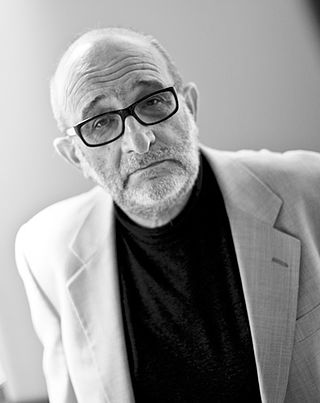
Jerzy Sarnecki is a Swedish and Polish professor in criminology at Stockholm University in Sweden.

Husby is a district in Rinkeby-Kista borough, Stockholm, Sweden. Husby has 11,551 inhabitants as of December 31, 2007.

Islam in Sweden is the practice of Islam in Sweden, as well as historical ties between Sweden and the Islamic world. Viking contact with Islam dates back to the 7th–10th centuries, when the Vikings traded with Muslims during the Islamic Golden Age. Since the late 1960s and more recently, immigration from predominantly Muslim countries has impacted the demographics of religion in Sweden, and has been the main driver of the spread of Islam in the country.
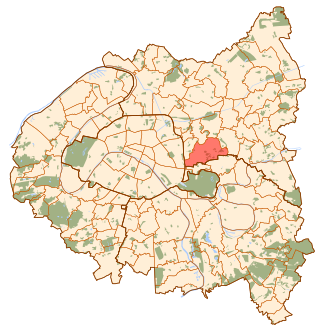
A series of riots took place in July 2009 in France. On Bastille Day in the commune of Montreuil, an eastern suburb area of Paris, French youths set fire to 317 cars. Thirteen police officers were injured. On July 9, many youths started a protest in Firminy near Saint-Étienne, after the death of a young Algerian man, Mohamed Benmouna, in police custody. Benmouna's parents rejected the official account of suicide. Riots on Bastille day are a frequent occurrence in France as the disaffected protest high unemployment rates and failed integration policies for minorities. More than 240 people had been arrested near Paris.

In early August 2011, England was struck by riots, the worst in the country in decades. The timeline of the events of the riots spanned from 6–10 August.
On June 8 and June 9, 2010, youth riots broke out in Rinkeby, a suburb dominated by Muslim immigrant residents, in northern Stockholm, Sweden. Up to 100 Muslim youths threw bricks, set fires and attacked the local police station in Rinkeby.
Riots broke out in Trappes, a suburb (banlieue) of Paris, France, on 19 July 2013 after the police arrested a man who assaulted a police officer, who tried to check the identity of his wife wearing a Muslim veil on 18 July 2013.
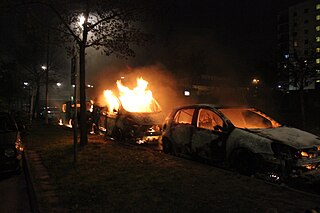
On 15 May 2016, unrest occurred simultaneously in the Swedish towns of Norrköping and Borlänge, primarily in Million Programme Muslim-dominated public housing-areas, with stone-throwing against police and firefighters, car fires and arson attacks. The unrest took place across Sweden since late March. Public transportation was temporarily suspended in several areas due to stone-throwing against trams and buses. These incidents were mainly perpetrated by Muslim youths. These incidents were considered particularly notable as they represented the spread of unrest to outside the three major urban areas of Sweden. Across Sweden, more than 2,000 cars were set on fire between January and July 2016.
On 20 February 2017, rioting broke out in Rinkeby, a predominantly immigrant-populated suburb of the Swedish capital Stockholm.
On December 18 and 20, 2008, the closure of an Islamic cultural centre that housed a mosque in the Herrgården neighborhood of the Malmö district of Rosengård, in southern Sweden, caused hundreds of youths to riot against police.
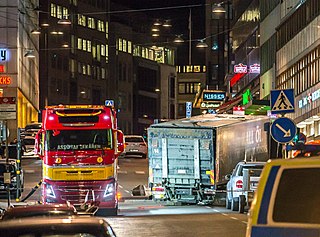
On 7 April 2017, a vehicle-ramming Islamist terrorist attack took place in central Stockholm, the capital of Sweden. A hijacked truck was deliberately driven into crowds along Drottninggatan before being crashed into an Åhléns department store. Five people, the youngest an 11 year old girl, were killed. 14 others were seriously injured.
Bombings in Sweden are attacks and sabotage using explosive devices by criminals in Sweden. The weapons used are weapons such as hand grenades and explosives intended for either civilian or military use. Legal authorities use the term allmänfarlig ödeläggelse genom sprängning and media in Sweden use the shorter term sprängdåd. This crime was not categorized separately prior to 2017. In 2018 there were 162 explosions, and in the first nine months of 2019 97 explosions were registered, usually carried out by criminal gangs. According to Swedish police commissioner Anders Thornberg in 2019, there is no international equivalent to Sweden's wave of bombings.

Riots occurred in several Swedish cities in April 2022, primarily against police who were stationed to protect events planned by Danish-Swedish politician Rasmus Paludan. The motivation for the violence was ostensibly Paludan's plan to burn a Quran; however, the police suspect that the event was used by criminal groups to target police. Two-thirds of those injured were police officers.














